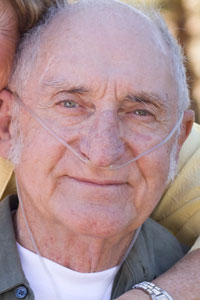Introduction to Giving Oxygen

We breathe in oxygen about every four to five seconds to fuel our body’s functions. No animal or plant can live without oxygen. The air we breathecontains about 21 percent oxygen. This amount is enough for people with healthy lungs and even for many with lung disease. However, some people with lung disease do not breathe in enough oxygen through normal breathing. These people need extra (supplemental) oxygen. People who have chronic (long term) lung disease or who have acute (short term) breathing conditions may require oxygen in the home.
When a person’s heart or lungs are not able to deliver enough oxygen to the body’s organs and tissues, oxygen therapy is needed. Oxygen is a gas that must be prescribed, like a medicine, by a doctor. Depending on a person’s illness, oxygen therapy will be either temporary or long term.
Oxygen is dangerous if not used correctly. Thus, you must understand these points in order to assist a person who receives oxygen:
- Know why the person is receiving oxygen
- Know the amount of oxygen prescribed (NEVER adjust the flow rate without doctor permission)
- Know how to use oxygen equipment safely and correctly
- Know the warning signs when a person is getting too little or too much oxygen
- Know the steps to take when an oxygen system fails
Giving oxygen is a relatively easy skill if you understand why the person you care for needs oxygen and how to act when an oxygen delivery system does not function properly. This lesson will prepare you to safely administer oxygen.
Here’s Lucy’s Story:

My grandfather smoked for many years. He has a disease called emphysema, and he has needed oxygen in the home for the last 2 years. He wears a nasal cannula, a plastic tubing that connects to an oxygen container on one end and curls around his ears and has two prongs that fit into his nostrils, on the other end. He receives the oxygen through the two small prongs in the nose. I have to monitor the oxygen setting on the container to be sure that grand dad does not get more oxygen than he needs. We have learned that getting too much oxygen is dangerous and could cause him to stop breathing. It is important that our home is safe when the oxygen is on. Oxygen containers have to be stored the right way. We need to be sure that there are no sparks or fire around the oxygen container or grand dad’s cannula. Oxygen and certain products like Vaseline can quickly ignite causing major burns and fires. Since oxygen is one of grand dad’s medicines, I have to be sure it is given correctly and safely.